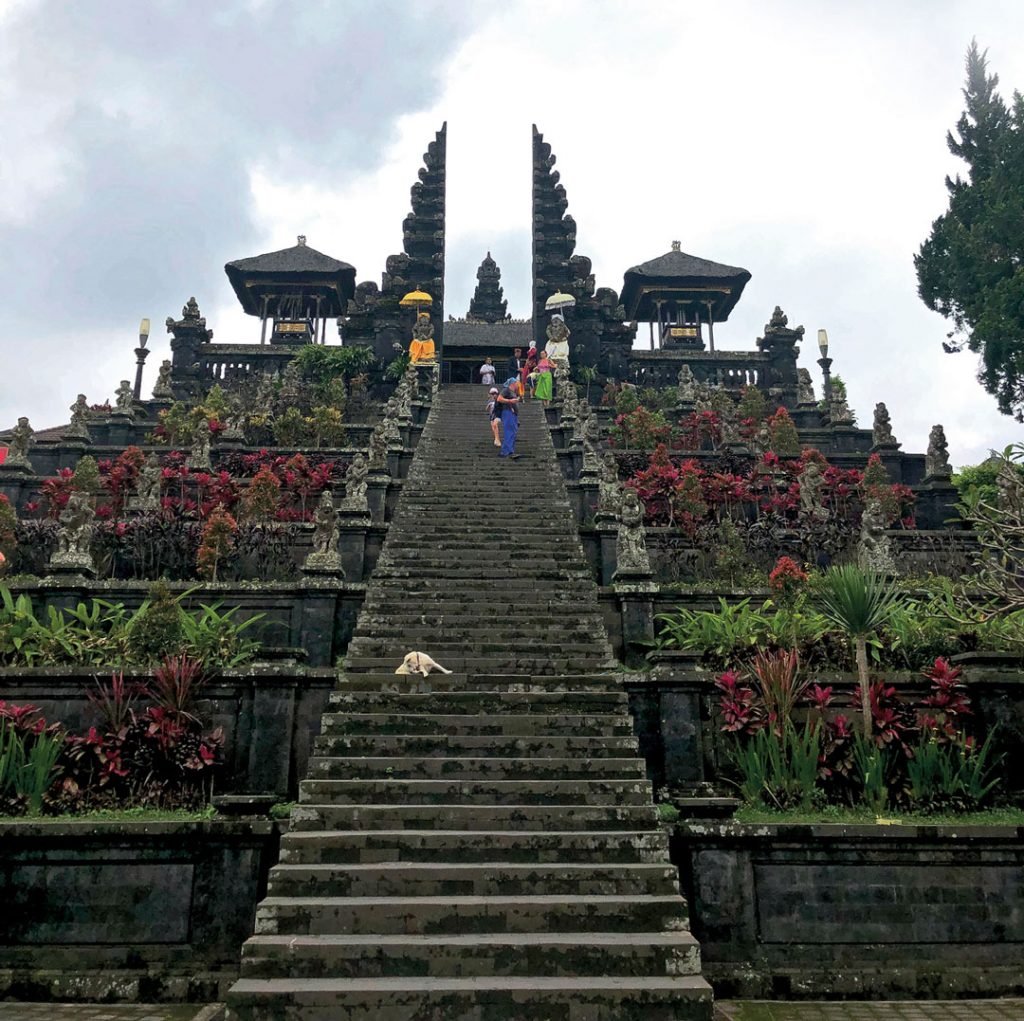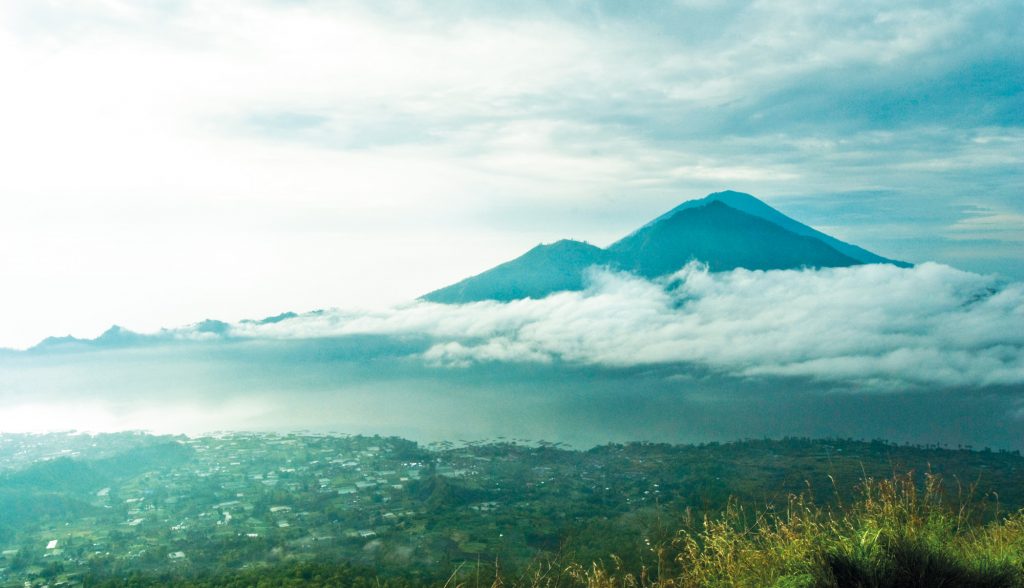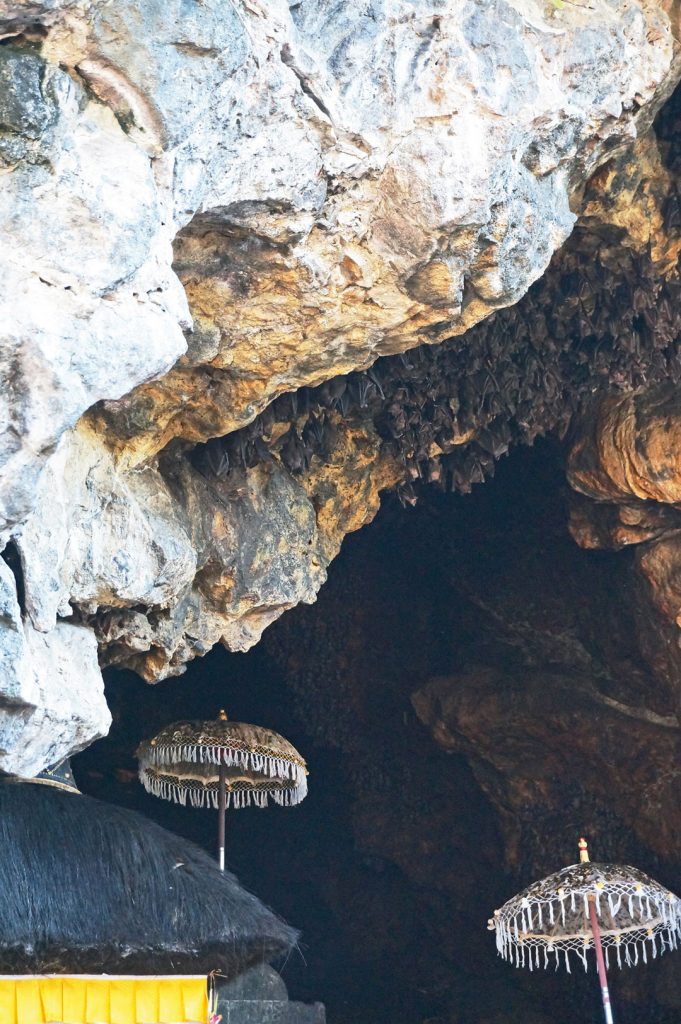Here on the island, there are nine temples known as the Pura Kahyangan Jagat. Meaning the ‘palaces of the gods’, the temples of Kahyangan Jagat are spread across nine cardinal directions (eight wind directions with another being in the centre), aimed to foresee any evil attack from any direction, and repel it.
There’s something special about the temples in Bali: the way they are laid out and their locations. The compound of a Pura is divided into three areas: nista mandala or the outermost zone, where the entrance to the temple is located; madya mandala or central zone, where worshipping takes place; and utama mandala or the most sacred zone, where sacred effigies are stored.
Just like the layout, the location of a temple is also important especially on an ever superstitious island like Bali. There are rules even for the location of temple at home that protects a private compound; now imagine the requirements for the locations of the temples guarding the whole island from evil spirits. For such temples, the pillars that hold Bali together, the only locations fit to nestle are those where the gods dwell – these are the Pura Kahyangan Jagat.
PURA BESAKIH: THE MOTHER TEMPLE
Referred to as the island’s ‘Mother Temple’, Besakih is the centre of the nine Pura Kahyangan Jagat temples and the most important of all temples in Bali. It sits on the southern slopes of sacred Mount Agung, and is known as one of the temples surrounded by natural views.

Pura Besakih is a complex of temples in a large, terraced compound. It comprises three main temples representing the Hindu trinity. The first and the biggest one is Pura Penataran Agung, found in the centre, with its white banners dedicated for Shiva, the destroyer; Pura Kiduling Kreteg to the right featuring red banners dedicated for Brahma, the creator; and Pura Batu Madeg representing Vishnu, the preserver, with its black banners. In addition to the three main temples, the complex also houses more than 80 other, individual temples.
Besakih has been hit by earthquakes several times, with particularly the biggest one in 1963 when Mount Agung erupted. Several parts of the complex were damaged, but in 1963 the lava flow went past it, leaving Besakih out of the destruction. This occurrence made the people believe that the deities protected the holy temple.
There are more than 70 ceremonies or religious celebrations held each year in Besakih, as each temple has its own anniversary, in addition to the big holidays based on the Balinese Hindu calendar.
PURA ULUN DANU BATUR: NORTH
Found in Kintamani, Pura Ulun Danu Batur or Batur Temple is believed to be the palace of Goddess Batari Ulun Danu, ruler of the lakes. Ulun Danu translates as “head of the lake”, which reflects not only the location of the temple but also its importance and main purpose. The compound of Batur temple consists of nine different smaller temples, with hundreds of shrines dedicated to the gods and goddesses of springs, water, crafts, art and agriculture – the things that make the island of Bali, its society, and culture.

Until 1926, the temple and the village of Batur were located down in the caldera, at the foot of the Batur volcano. After the volcano erupted violently in 1926, both the village and the temple were destroyed, except for the most important shrine, an 11-tiered meru tower dedicated to Dewi Batari Ulun Danu. The villagers moved it to the highest and oldest rim of the caldera, where they rebuilt their village and the temple. This is the northern Pura Kahyangan Jagat.
PURA PASAR AGUNG: NORTHEAST
The palace of God Sambhu, Pura Pasar Agung in Karangasem regency is one of the nine Kahyangan Jagat temples that guards Bali on the northeast of the island. This temple is located on the southern slope of Mount Agung, at an altitude of approximately 1,500 metres above sea level. The compound consists of two main temples, with Pura Pasar Agung being the biggest one and Pura Melanting. Prayers must be offered first at Pura Melanting before continuing the pilgrimage to Pura Pasar Agung.

The temple is crowded by pilgrims from across Bali during auspicious days, such as temple ceremonies that fall at around October to November, Purnama Kadasa that falls at around March to April, and Tilem Kesanga that falls on the day before Nyepi. On regular days, Pura Pasar Agung is packed by hikers ascending the sacred mountain, for the area where the temple nestles on is used as one of the starting points for Agung hiking. During important ceremonies that could last days, this area is reserved for pilgrims only. This is the northeast Pura Kahyangan Jagat.
PURA LEMPUYANG: EAST
The palace of God Iswara, the guardian of the east, Pura Lempuyang is one of the oldest temples in Bali. Definitely a highlight on any travel itinerary for the fit and adventurous, the main temple stands majestically at 1,175m above sea level, on the peak of Mount Lempuyang in East Bali. The temple is reachable via a steep flight of almost 2,000 steps, with attractions along the way that include several other temples and hordes of grey long-tailed macaques that inhabit the surrounding cool mountain forests. For devotees on a pilgrimage journey to the temple, this adds to the spiritual aspect of the climb.

Once you reach the top, all your efforts are paid off. You will be dazzled by the impressive architecture of the temple, and it is likely you will see Balinese people carrying offerings on their heads, balancing large baskets to get the blessings from the temple priest. This is the eastern Pura Kahyangan Jagat.
PURA GOA LAWAH: SOUTHEAST
Believed as the residence of God Maheswara, Pura Goa Lawah is an ancient cave temple built in the 11th century. The cave temple, featuring worshipping shrines built around a cave opening, is home to thousands of bats and, if the local legend is true, a giant king snake wearing a crown. The Siddhimantra Tatwa holy scripture states that the giant snake, a holy dragon named Basuki is the dweller of the cave at Goa Lawah, disguising himself behind the thousands of bats that cling to the ceiling and walls of the natural chasm. The king dragon only leaves when he bathes in the ocean just across the cave and when he travels to the holy mother temple of Pura Besakih on the foot of Mount Agung through the tunnel inside the cave.

The locals and the temple guardians believe that the tunnels inside the cave lead to Mount Agung (Besakih), and two other areas namely Talibeng and Tangkid Bangbang. In addition to the holy scripture, the belief is based on various accounts such as the emergence of ash from the cave when Mount Agung erupted in 1963. It’s also told that in the old days, a Mengwi prince used the cave as a hideout. He was once chased by his enemies; he went inside the cave and in due course followed through, eventually emerging at Besakih Temple on the foot of Mount Agung. No one has attempted to prove or bring light to this interesting tale. This is the southeastern Pura Kahyangan Jagat.
PURA ANDAKASA: SOUTH
Guarding the south of the island is Pura Andaksa, the palace of God Brahma. Based on ancient manuscripts, this temple was built in the 11th century. The temple was the meditating ground of a Hindu priest named Sang Kulputih on his way from Pura Lempuyang to Pura Besakih. The name of the temple is derived from “andabhuwana”, loosely translates to the ‘egg of the universe’, from where the elders of Bali understand scientifically that the earth’s shape is round like an egg.
Though not popular amongst visitors to the island, Pura Andakasa plays a vital role in the religious life in Bali. The temple is where Pemangku (temple guardian and priest) and Balian healers from across Bali come to ask for blessings from the gods.
PURA ULUWATU: SOUTHWEST
The palace of God Rudra, Pura Luhur Uluwatu or popularly known as the Uluwatu temple is dramatically located on a cliff’s edge. The temple is celebrated for its religious importance and the stunning natural surroundings, making it one of the most prominent sites in Bali frequented by the Balinese Hindu pilgrims and visitors to the island alike.

Just like anything else important and historical, the history of Uluwatu temple is documented on ancient lontar, palm leaf scrolls inscribed with ancient Balinese or Javanese letters. And in the case of Uluwatu temple, there are two lontars documenting the establishment of this important temple. The first lontar states that the temple was built by a Hindu priest named Mpu Kuturan in the 9th century. According to this lontar, Uluwatu temple is the portal to heaven, and that if one prays with total focus and concentration here, then he or she can walk through the gate of heaven.
The other lontar pretty much contains several similar aspects including mentions of the gate to heaven. According to this second lontar, Uluwatu was built – also in the 9th century – by a Hindu priest named Dang Hyang Nirartha, also known as Dang Hyang Dwijendra, the holy man who built a number of other important temples in Bali such as Tanah Lot.
The root word from which the name Pura Luhur Uluwatu is derived from is ngeluhur, the Balinese word for ascension; and the ascension of Nirartha is commemorated during the Uluwatu temple’s ceremony, or known as odalan, which according to the Balinese calendar falls twice a year on Selasa Kliwon, meaning “special Tuesdays”. It’s also believed that the big number of the monkeys found scattering around the temple’s premises are Nirartha’s soldiers. Nirartha transformed them into monkeys before his death, so they are bound to guard the temple forever.
Today, ‘secret’ spiritual activities are still undertaken at the temple. It’s said that during auspicious nights, the island’s most spiritually powerful people would come and pray at Uluwatu temple to increase their power. This is the southwestern Pura Kahyangan Jagat.
PURA LUHUR BATUKARU: WEST
On the southern foot of Mount Batukaru, Pura Luhur Batukaru is the palace of God Mahadewa. It was built in the 11th century by Mpu Kuturan, a priest from Java, with the aim to encourage the balance between human soul, ocean, forest, lake, and earth.
The main compound features a multitude of shrines with tiered roofs and the complex is filled with ancient structures heavily covered in green moss. The well-maintained garden and the blooming flowers add some colour to the compound which is otherwise dominated by brown wooden and earthy colours. Below the main compound there are two bales at both sides where ladies from the village prepare the offering before a ceremony. Within the main temple courtyard there is a freshwater spring that serves as the holy water source for prayers and ceremonies. Another separate spring serves cleansing and purification rituals.
The best time to visit is during the temple anniversaries, which falls on each Thursday after the Galungan celebrations. Balinese Hindu families from adjacent villages and all over the island make pilgrimages to this mountain temple for blessings. This is the western Pura Kahyangan Jagat.
PURA PUCAK MANGU: NORTHWEST
The last temple that make up the collection of Kahyangan Jagat temples is Pura Puncak Mangu, the residence of God Sanskara. The temple is said to have been around since the megalithic era in Bali, based on the big ancient artefact found in the site where the temple nestles. It was also here that I Gusti Agung Putu, founder of Mengwi Kingdom, meditated during one of his wars in the olden days.
Up until the fall of Mengwi Kingdom in 1896, there’s no record mentioning the restoration of this temple, especially given the fact that Pura Pucak Mangu was affected by the big earthquake in 1927. The temple was only restored in 1934 – 1935, and later in 1978 after it was hit by a windstorm. And due to the serene silence surrounding the temple, Pura Pucak Mangu is frequented by those looking to meditate.
The remote location of this temple makes Pura Pucak Mangu difficult to access. To reach the temple, you have to go through a 6-kilometre trek in the jungle. But once at the clearing where the temple is located there are amazing views of the mountains of west Bali to the west and Mount Batur and Mount Abang to the east. This is the northwestern Pura Kahyangan Jagat.







